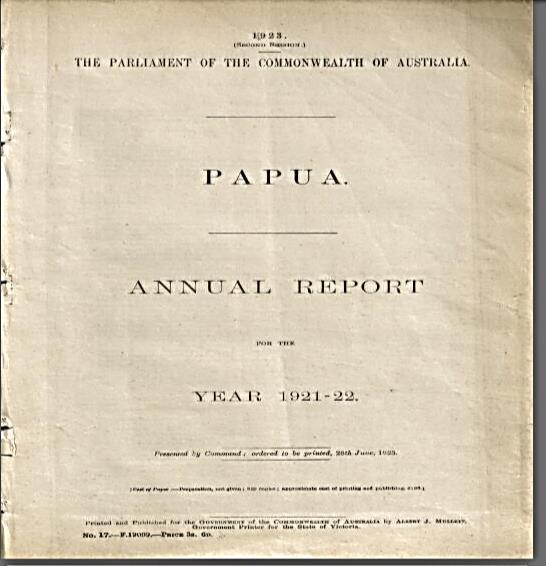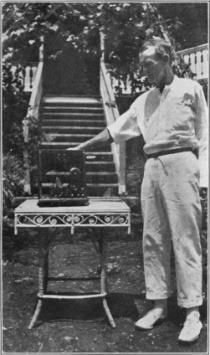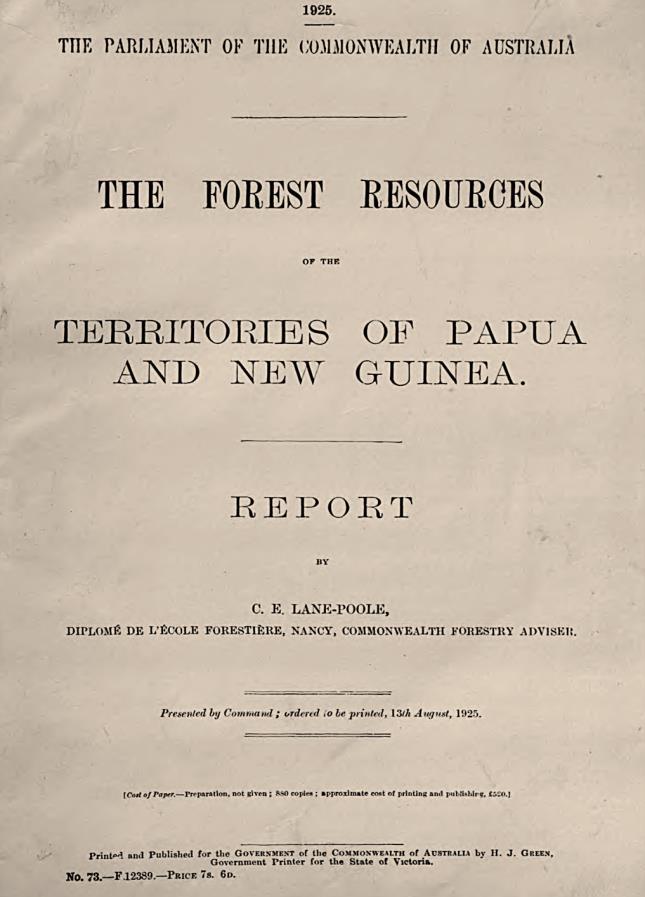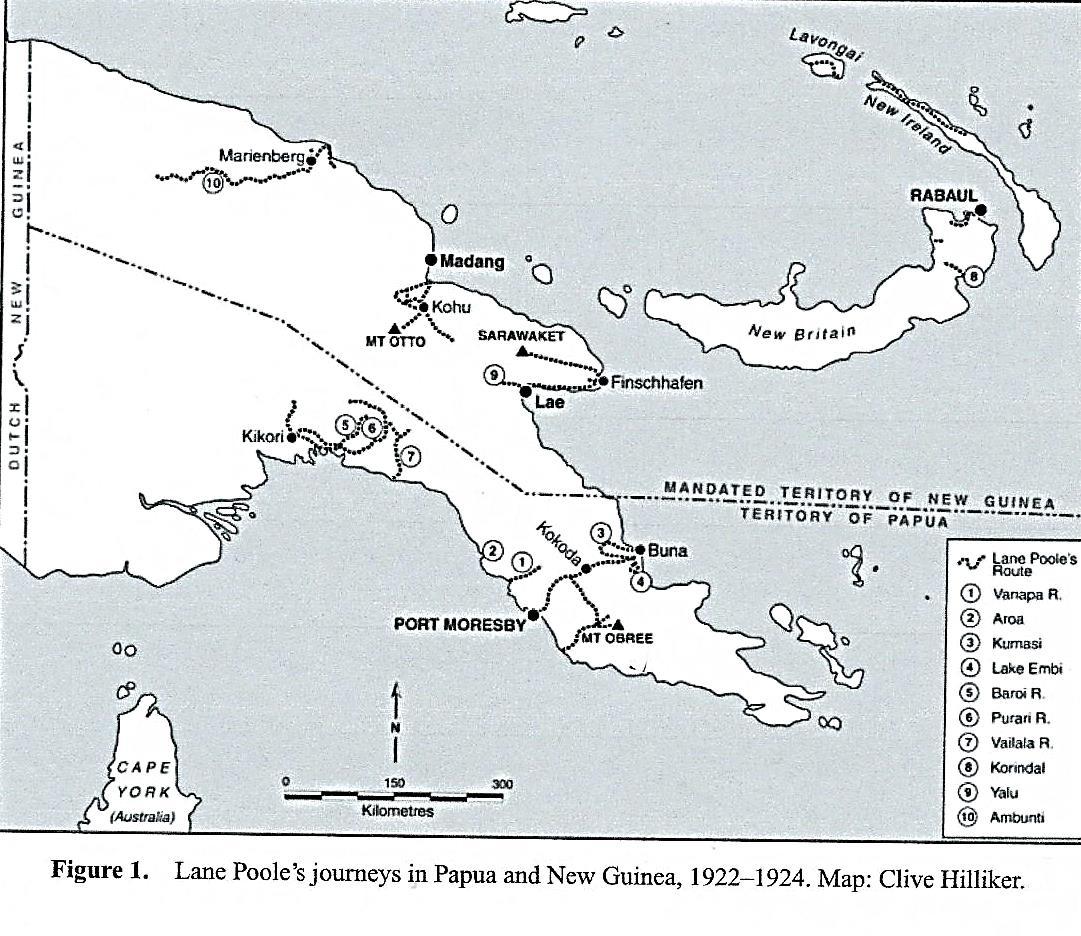
7 minute read
1920 -1925 Lane Poole’s Assessment of TPNG’s Forest Resources
from PNGAF MAG ISSUE #9J W3 of19th Nov 2022 PNG WOODS Phases of Industrial Development till 1975
by rbmccarthy
1920 -1925 LANE POOLE’S ASSESSMENT OF TPNG’S FOREST RESOURCES
Requests for Lane Poole’s Surveys29
Advertisement
Parts of the Australian timber industry became worried about their supplies when New Zealand had banned exports of its white pine (Podocarpus dacrydioides) and kauri (Agathis australis) that were used for butter boxes, while at the same time supplies of Australian kauri (Agathis robusta) and hoop pine (Araucaria cunninghamii) were diminishing. In 1920 a Melbourne timber agent, Victor Trapp, arranged for one of the timber companies to investigate the possibilities of obtaining case, match and plywood material from Papua. Nothing came of the industry investigation, but when Trapp learnt of Lane Poole’s resignation from Western Australia, he suggested that the Commonwealth should secure his services.14 With no other job in sight, Lane Poole accepted a 12-month appointment that was later extended by 6 months. For New Guinea, W. M. Hughes, in one of his more erratic actions as Prime Minister, supported an ineffective private scientific expedition at about the same time. This took with it a forest inspector from Queensland, F. W. Hayes, who fell ill, and it was left to the geologist, Evan Stanley, to write the report, including a few notes on timber. The new administration knew little else about New Guinea’s forests, but when it heard that two companies were being formed to exploit their timber, it asked Lane Poole to continue his Papuan survey for a further year in New Guinea.
1921/1922 Lane Poole Arrives
Forestry page 81 of Annual Report Papua 1921-22. Very little had been done during the year in commercially exploiting the timber resources of the Territory. A great proportion of the timber licenses have been cancelled during the period under review. The only licences at present in existence are five held by the New Guinea Copper Mines aggregating 17,340 acres (one on Woodlark Island of 12,000 acres, and one on the mainland near Samarai of 2,600 acres. Mr C E Lane Poole, a forester of long experience in various parts of Africa and in Western Australia and possessing very high credentials was engaged for twelve months from 16th March 1922 to report generally upon the timber resources of the Territory. Mr Lane Poole arrived on 9th April 1922 and up to present has only been able to inspect the country around Galley reach in the Central Division. No detailed report has as yet been received but generally speaking, his views regarding the timber resources of that locality are not very favourable
29 From exploitation to science: Lane Poole’s forest surveys of Papua and New Guinea, 1922–1924. Historical
Records of Australian Science 17: 71–90. by John Dargavel School of Resources, Environment and Society,
Australian National University, Canberra, ACT 2000, Australia. Email: john.dargavel@anu.edu.au
1923/24
Forestry page 37 (Report to the League of Nations on New Guinea
1923 to 1924). The investigation and classification of the timber resources of the Territory were commenced during the year, the work being entrusted to Mr C E Lane Poole a forestry expert, who had just previously completed a similar task in the neighbouring Territory of Papua
In 1924 the Commonwealth Government took a positive step towards involvement in forestry by the appointment of Lane Poole as its Forestry adviser.
Charles Lane Poole at Madang, 1924, showing the remains of a radio damaged in the raid at Kohu. Note his gaunt appearance after the rigours of his expedition to Mt Otto. Source: C. E. Lane Poole, Forest Resources (1925), courtesy of the National Archives of Australia
In 1925, Lane Poole presented his Report Forest Resources of the Territories of Papua and New Guinea, to Federal Parliament. 30Don McIntosh recalls during the 1950’s another activity was the reconnaissance assessment of the coastal forest of Open Bay which had been logged for walnut some 20 years previously. The survey, to assess the log export potential of the forest, was done under the watchful eye of Lane-Poole. Lane Poole first came to Papua New Guinea in 1922 and produced, after a lot of field work, the first document on the forest resources of Papua New Guinea. He was a small tough old chap with a hook arm who must have been in his late 60’s when he went on the Open Bay survey.

30 Reference PNGAF Mag # 9B-5B4M2 of 27th July 2021 Eminent TPNG forester Don McIntosh.

1923-1925. Lane Poole Forest resources
Report 31 32 In 1925, Lane Poole presented his Report Forest Resources of the Territories of Papua and New Guinea to Federal Parliament. In 1923 and 1924, Charles Lane Poole completed a survey of Papua and New Guinea and recommended the establishment of a forest service.

31 Ref: PNGAF Mag # 9B-5 of 21/4/21 p 9. Ref PNGAF Mag # 9A of 15/3/21 p37 32 Cover page C E Lane Poole 1925 Report on Forest Resources of the Territories of Papua and New Guinea Government Printer Melbourne 209 pp
In Dargavel’s review of Lane Poole’s survey 33 a major problem for Lane Poole was to determine the species of each tree, given that there were 50–60 different species at each site and about 400 overall. However, people with an intimate knowledge of the trees of a particular area can name them from the look of their leaves, bark, trunks, crowns, and many small details. Lane Poole found that ‘The bush native has a wonderful knowledge of his trees.’ He used their skill in identifying each species to record them consistently across each site. For each new species he encountered, he collected specimens of the bark, wood, and leaves, as well as the flowers or fruit when they were present, sometimes trying to shoot material down from the crowns but more commonly having someone climb up. He used a pre-printed sheet of headings to record each species by its herbarium number and local name and to give a detailed description of the living tree. Lane Poole devised a metal drying box that he used to dry his specimens instead of pressing them between paper in the conventional way. Even when dried initially and kept pressed in paper, he passed them through the drier periodically to ensure that they were kept free of mould until they could be despatched to the Queensland Herbarium for identification.
The specimens sent to the Queensland Herbarium for identification arrived in good condition, thanks to Lane Poole’s attention to drying them carefully. They were examined by C. T. White and W. D. Francis. White and Francis provided Lane Poole with as many names as they could for his 1925 report. They noted that the collection showed that the flora of the Territories was closer to that of Southeast Asia than to Australia’s.
Lane Poole collected wood samples that he examined himself using a set of hand lenses. He recorded a general description of each, the width of the sapwood, the colours of sap and heartwood, and measurements of the frequency of the rays and pores. He also remarked on how the wood cuts in general categories of ‘cuts hard,’ ‘cuts firm,’ ‘soft to cut,’ ‘splits easily’, and so on. Lane Poole also collected and described samples of the bark. His report includes measurements of the basic density of the wood samples and of the colour and presence of precipitates in solutions extracted from many but not all the wood and bark samples. He does not report whether he made the density measurements and extractions himself. (Presumably, this work was done by James Mann).
In 1927, Lane-Poole became the Commonwealth Inspector-General of Forests and Acting Principal of the Australian Forestry School (1927-44) in Canberra. He was also the Administrator of the Forestry Bureau which he had proposed to co-ordinate education, research, and policy (not formally established until 1930). The research section which he first promoted in Western Australia to include research into making paper from eucalypts was developed in Melbourne as the Division of Forest Products of the Council for Scientific and Industrial Research. The forestry research section of the bureau eventually developed as the Division of Forest Research, C.S.I.R.O in Canberra.
33 From exploitation to science: Lane Poole’s forest surveys of Papua and New Guinea, 1922–1924. Historical Records of Australian Science 17: 71–90. by John Dargavel School of Resources, Environment and Society, Australian National University, Canberra, ACT 2000, Australia. Email: john.dargavel@anu.edu.au










